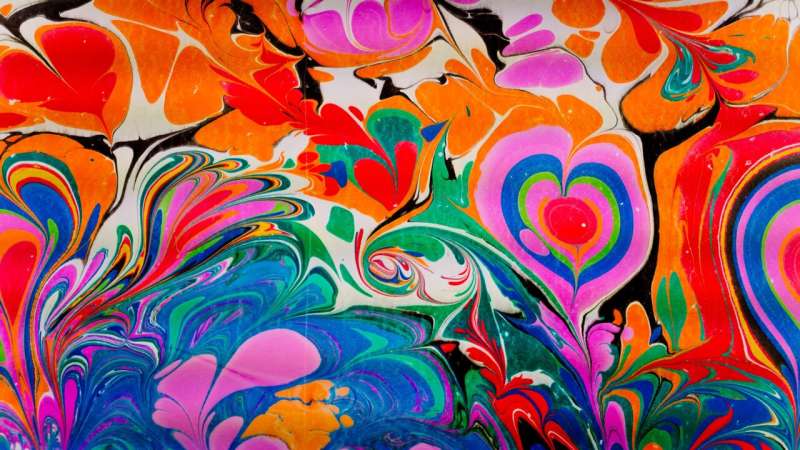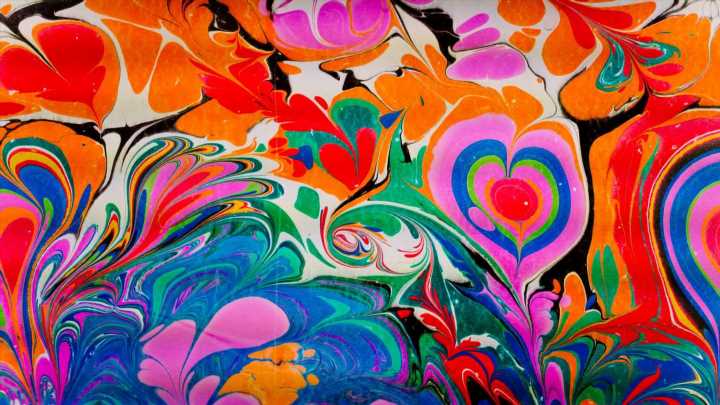Psychedelics paired with therapy could treat chronic mental health conditions

Psychedelic drugs are mostly banned in Europe, but new research suggests they may be beneficial to some when taken in a controlled setting.
Mind-bending drugs and psychedelics are generally stigmatized and illegal in EU member states, due to concerns about their possible harmful effects. However, in other parts of the world, some psychedelic compounds are exalted for their healing properties and have been consumed in spiritual and cultural ceremonies for millennia.
Now scientists in Europe and the U.S. are starting to wake up to what shamans have been saying for years. There is a growing body of evidence to suggest some psychoactive substances have immense therapeutic potential, especially when it comes to tackling serious, hard-to-manage mental health issues such as post-traumatic stress disorder (PTSD), depression, alcoholism and eating disorders.
Mental disorders contribute enormously to the global burden of disease, with huge costs to both society and the economy. Psychedelics (which are generally considered non-addictive) may offer a tantalizing form of therapy for difficult-to-treat conditions.
In response to the burgeoning interest from the scientific community, dozens of privately funded American studies, and a handful in Europe too, are attempting to unravel the neuroscience of psychedelic “trips.”
The endgame for many scientists in this area is to decriminalize psychedelics (both synthetic and natural) and establish safe protocols that will allow doctors and psychotherapists to harness the “magic” in these compounds for medical purposes. The goal is to achieve a lasting recovery in patients.
“Researchers involved in this field picture a world where psychedelics are safely and legally available for beneficial use, and where research is given the opportunity to thoroughly evaluate their risks and benefits,” said Dr. Claudia Schwarz-Plaschg, who recently completed the three-year, Horizon-funded ReMedPsy project, where she examined (among other things) society’s evolving views on psychedelics.
Mainstream acceptance
“Before we can make real progress in the medical use of psychedelics, we need to cultivate mainstream acceptance of these substances,” said Dr. Schwarz-Plaschg, adding, “In this sense, America is definitely ahead of Europe.”
While psychedelics are enjoying favorable attention from scientists, this is not the first time research institutions have expressed an interest in these substances. The 1950s and 1960s were a previous age of scientific and cultural exploration of psychedelic substances. However, when the political mood swung against all categories of “recreational” drugs, research was shut down.
Today’s revival of interest seeks to deepen our understanding of the biological mechanisms that give rise to the mind-altering effects of psychedelics, so they can be safely integrated into society.
“These substances must be used with great care and respect,” said Dr. Schwarz-Plaschg. “They can be abused and they can be used to control people, so it’s vital to get both the set and setting right before they are taken.”
The “set” refers to the mindset of the person entering the experience. People need to be relaxed and free of fear, as this will influence the experience they have.
And the “setting” refers to the physical place you are in. “You must be comfortable and in good hands, and you must feel safe,” she said.
Altered state
So, what is it about these substances that makes them so appealing both on the nightlife scene and in a therapeutic setting?
Psychedelics trigger an altered state of consciousness. They affect all the senses and shift a person’s thought processes, sense of time and emotions. Dr. Schwarz-Plaschg says the sensation they elicit is one of ‘opening up.”
She said: “Take a substance like MDMA (the active ingredient in the dance party drug Ecstasy). It produces a lot of empathy and strong feelings of bonding with others. Taken in the right setting, a person will also go within, and feel a lot of love and empathy for themselves—and if they’ve been the victim of a traumatic crime, probably for the perpetrator too.”
In this state of emotional expansiveness, patients are sometimes able to revisit traumatic experiences and confront catastrophic memories in a way that would be impossible under normal circumstances.
“They can feel the same powerful feelings they first experienced at the time of their trauma but with less fear,” explained Dr. Schwarz-Plaschg. “And with the help of the psychedelic and their therapist, they can reframe the memory in a new light.”
Positive perspective
“This process can help a person release feelings that have been stored in their bodies and give their traumatic experience a fresh, more positive perspective,” said Dr. Schwarz-Plaschg. “This perspective seems to stay with them even after the effects of the substance have worn off.”
Dr. Schwarz-Plaschg is quick to point out that the work of psychedelics is explained through science, not magic. Their active molecules bind with the body’s receptors for serotonin—the “feel good” neurotransmitter. Established antidepressants work along similar lines. However, psychedelics, when paired with therapy, appear to stave off mental health disorders for longer—for some, perhaps even forever.
A radical approach being proposed by scientists in this field is psychedelic-assisted psychotherapy (PAP). This is the professionally supervised use of psychedelic substances as part of a detailed psychotherapy program.
Psychedelic therapy
“We picture a world where psychotherapists are trained in the use of psychedelics, so these substances can be offered as part of a package,” said Dr. Schwarz-Plaschg. The program would involve the pairing of a specific substance with a specific type of therapy. Maybe the patient would have two sessions where the therapist gives them psilocybin (found in “magic mushrooms”) and then two sessions of pure therapy.
In one 2021 trial, run by the Multidisciplinary Association for Psychedelic Studies (MAPS)—an American non-profit to raise awareness and understanding of psychedelics—MDMA-assisted therapy was given to people suffering from chronic post-traumatic stress disorder (PTSD). This condition is profoundly challenging to treat. After just three sessions, 67% no longer met the diagnostic criteria for PTSD while 88% experienced an improvement in symptoms.
“Once we have more data on the best type of treatment mode to make people better, we are hopeful that the European Medicines Agency will give their approval,” said Dr. Schwarz-Plaschg.
The three substances at the center of current scientific research are MDMA, psilocybin and ketamine (used as a sedative at higher concentrations and also known for its hallucinogenic effects).
Since 2019, esketamine—a ketamine-based nasal spray—has been allowed in the U.S. and the EU to treat major depressive disorders, but only when other antidepressants have failed and only when administered from a certified clinic.
For many people with depression (but not all), esketamine is proving to be a breakthrough therapy. It acts fast and seems to significantly decrease the likelihood of a relapse into severe depression, when compared to oral antidepressants paired with a placebo nasal spray.
Optimal dose
However, as with other psychedelics, more data is needed on the mechanism by which this mind-altering treatment works. More work is also needed to establish how many doses, and at what concentration, patients should take the treatment to achieve optimal results.
The use of MDMA and psilocybin is forbidden in most of Europe (some exceptions are available, with restrictions, in the Netherlands and Austria). However, champions of psychedelics are making good progress in the U.S.
Since 2021, magic mushrooms have been legal for mental health treatment in supervised settings in some parts of the U.S., and a bill pending in California would go some way to legalizing the use of a medley of psychedelics that includes magic mushrooms, MDMA and LSD.
Source: Read Full Article



